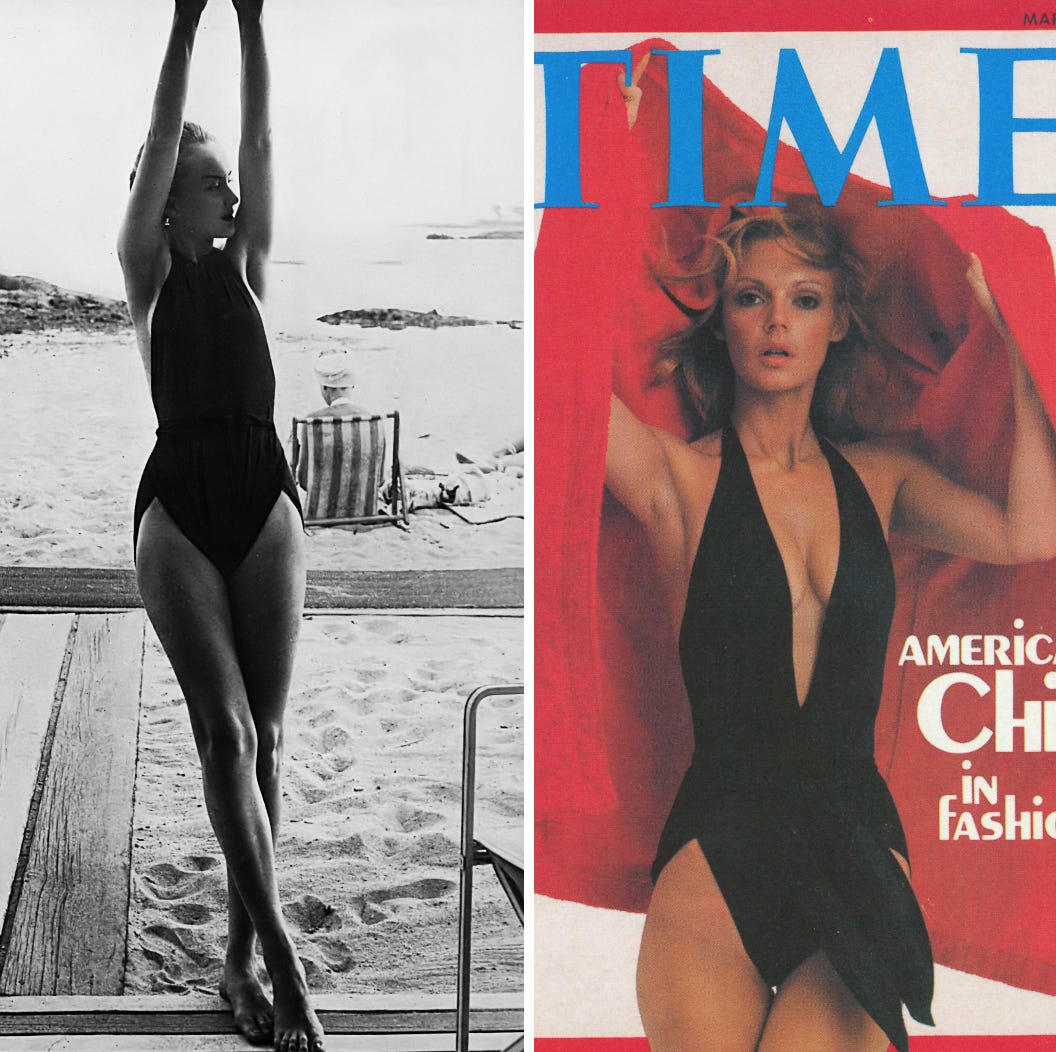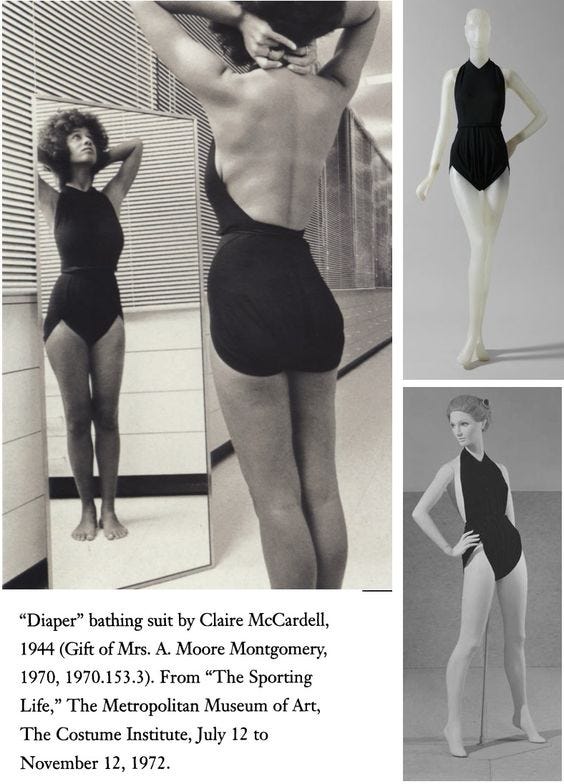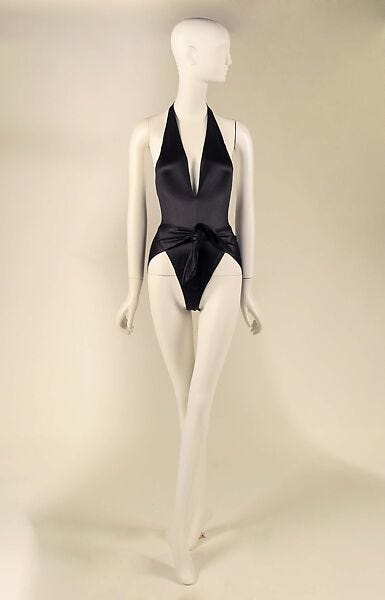INFLUENCED: CLAIRE MCCARDELL x HALSTON
The mother of American fashion was essential to the'70s minimalist.

Before we begin, let’s get one thing straight: Claire McCardell is among the most criminally undersung fashion designers in history. Her utterly modern philosophy on dressing coupled with a deep understanding of garment construction resulted in the most sensuously pragmatic clothes imaginable. If we had a Vionnet this side of the Atlantic, she would be it.
And for all of McCardell’s accomplishments, what does she get? Let’s just say there’s no new grand Met exhibit in the works, sumptuous coffee table monograph – yes, I know they brought one of her original texts back into print, but it’s not the same – or prominent discourse on just how profound her body of work is. (Can you tell how furious this erasure makes me?)
However, greats recognize other greats. I could write a textbook on how McCardell changed fashion, but for this edition of Influenced, I’m going to hone in on one designer and garment inspired by her work: Halston and his cover-worthy swimsuit.

McCardell firmly believed that clothes should be honest in how they function: snaps should snap; wraps should wrap; buttons should button. There was no room for details or finishings that were merely for show. Many of her designs were highly adjustable with the wearer simply tying things in place based on where it best suited their anatomy.
Her Diaper swimsuit of 1944 remains true to this ideal, swaddling the body and passing between the legs to form diamond-shaped leg cutouts. This touch is not only a distinctive design choice but also an anatomical one that allows space for the natural swell of the thigh.
Featured on the cover of Time magazine in March 1976, Halston’s Savage swimsuit from the same year can trace its origins directly to McCardell’s stellar example. Though its neckline is considerably more daring, it maintains the unique leg openings and a sense of McCardell’s economical patternmaking – the design is made from a single piece of fabric that drapes down the front of the body, passes through the legs and rises up from behind to form the seat before finally being tied secure at the front. And just as with so many of McCardell’s creations, the specific placement and snugness of this Halston original’s tie is left up to the wearer.

Halston was keenly aware of his predecessors. As a milliner in charge of Bergdorf Goodman’s hat department early in his career, he was exposed to the finest couture from the likes of Grès and Balenciaga (both of whom would greatly impact his designs). But let’s go even further back. Halston was a young teen when McCardell launched her Diaper Swimsuit and the slew of other brilliant works she’d go on to produce after World War II. Her work became so noteworthy that she beat Halston by decades with her own cover of Time magazine in May of 1955.
There’s no doubt that, at some point, Halston came across McCardell’s work in his adolescence. Fashion runs in cycles that are usually influenced by the era in which the most prominent designers of a given time grew up. And it makes sense. Is there ever anything in life we love so much, so intensely as that which we love when we’re 12?



